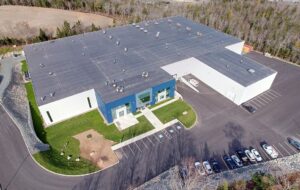The agriculture technology investor’s journey to exit is still unclear. As with all new asset classes and sectors, most investment firms tracking the growing agtech industry have yet to build a substantial track record and, therefore, a typical route to exit.
Speakers and delegates at the World Agri-Tech Investment Summit last week discussed the options on and off the stage. Here are the main four discussed, and their respective challenges.
Strategic trade sales
The most exciting exits have been strategic trade sales, namely Monsanto’s acquisition of The Climate Corporation in 2013 for $1 billion, which arguably put agtech on the map for entrepreneurs and investors alike.
“That deal in some ways helped and hurt the market,” Andy Ziolkowski, partner at Cultivian Ventures, argued. “It helped set a nice bar for exits, but also changed expectations, so CEOs and founders are coming to us with the belief we’ll now be paying a higher price for their companies.”
The other agribusinesses of “the Big 6” — BASF, Bayer CropScience, Dupont, Dow Chemical Company, and Syngenta — have also played a role in building excitement around the sector and its exit potential, particularly in the biotech sphere.
Two examples include Bayer’s $425 million acquisition of AgraQuest, the biologicals company, in June 2012, from investors such as Otter Capital and Generation Investment Management; and in November of the same year, BASF acquired Becker Underwood, a biological seed treatment, from Norwest Equity Partners, for $1.02 billion.
But how much digital, big data-based agtech can the big 6 acquire?
“The good news is that there are still six companies,” said Alex Steel, head of corporate venture capital at Syngenta. “To get a good price for your asset, you only need two parties. It’s more about creating an attractive asset. What is attractive to input companies? People bang on about the digital piece just because Monsanto bought Climate Corp, but I don’t think everyone needs one. The herd mentality can be wrong. There are lots of other opportunities to create valuable companies with venture returns that are attractive to Syngenta.”
Scott Horner, partner at Middleland Capital, the family office-backed VC, argued that the smaller, tier two agribusiness players could provide an attractive exit route as they try to differentiate themselves and remain relevant in the marketplace. “They will start making more concentrated and bigger bets as they have to attempt to be innovative and compete,” he said.
Generalist technology firms could become investors and provide another exit route, argued Gideon Soesman, managing partner, GreenSoil Investments, who mentioned he thought names such as Microsoft and Google could soon become buyers of agtech, particularly on the data side.
Ziolkowski agreed. “We’re seeing a number of larger companies who I think are looking at the ag sector and realizing how much data is, or could be, involved. There are a number of companies who I think understand data and could create another group of players beyond just the Big 6. I think there will be some interesting changes, so I do expect some of those larger IT companies to enter the field shortly.”
It is also worth mentioning other potential corporate acquirers such as machinery companies like Yamaha or Deere & Company, which recently acquired Precision Planting from Monsanto.
Public listing/IPO
There have been just a couple of examples of IPOs in the agtech space including Marrone Bio Innovations, the biopesticide company, and Arcadia Biosciences, the agriculture traits producer. But agtech IPOs do not have a good track record, argued Armand Lavoie, managing director at Kirchner Group, the merchant banking firm with M&A experience in the sector.
Marrone is currently trading 80 percent below its IPO price and Arcadia is 65 percent below IPO price. Both deals were also downsized on subdued demand and priced below their initial share price target range.
“You probably need to raise $100m to have substance,” said Lavoie. “And you probably want to be at $100 million in revenues. Very few are even close to that; a lot are too far away, so they are selling a story. So I don’t think an IPO is the right path for most agtech companies.”
Some delegates argued that an investment by and involvement of a strategic investor in the early stages of a company’s development could help give the company credibility ahead of an IPO.
“The best exits so far are those that have had corporate investors,” argued one delegate, although he was speaking more generally about the exit market, and not specifically about IPOs.
There are also arguments that strategic involvement too early could limit the progression of an agtech startup.
Marrone Bio’s early investors included Syngenta Ventures, which joined the shareholder register during its Series C round of funding. Arcadia Biosciences also had a strategic investor in BASF Venture Capital, which invested at a very early stage.
“For an IPO exit, you need to have some kind of dominant position or be viewed as significant,” argued Jack Levy, co-founder of ICV, the Israeli investment firm, pointing to the challenge that presents. “It’s always easier to get a blowout exit when you’re number one. If you’re number two, you need to be growing much more rapidly than number one as comparisons will be made.”
Cultivian Ventures successfully IPO’d a company, Aratana Therapeutics, the companion animal medication specialist, which was trading on the NASDAQ above listing price for two years until recently. But Ziolkowski still doesn’t think it’s a targeted exit route.
“When we look at an investment, our expectation on liquidity is a trade sale,” he said. “Since we formed in 2008, we have made 19 investments, and from that we’ve had four trade sales and one IPO. That IPO happened to be in the companion animal health space, so not really mainstream agtech. I am certainly hoping that we will see some additional IPOs in the area. But our baseline assumption is trade sales and we are very conservative that way.”
Private equity and consolidation
Private equity firms have played a relatively limited role in the agriculture technology space so far. One of the main reasons is that few of them have been focused on agriculture. The early stage of many companies in the sector has also meant agtech investments have been of limited interest to private equity.
But this could change as consolidation opportunities appear with the increasing number of similar or complementary technologies, delegates argued.
“I do think there will be some roll up opportunities and consolidation down the road,” said Ziolkowski. “That will happen in the next couple of years and will set the stage for exits down the road. And there is potential for private equity players to play a role in these roll-ups and at least provide an exit avenue for the VC world to realize returns.”
“I agree that there is some need for consolidation,” said Lavoie. “There are so many players in the industry. It reminds me a bit of the dotcom race, especially in the biologicals space.”
There is a handful of private equity firms dedicated to investing into food and agriculture companies. Paine & Partners is by far the largest and is currently investing out of its $893 million Fund IV. Arlon Group out of New York, set up by the Continental Grains group, is gathering traction and has $980 million under management across North and South American assets. And another relatively established firm is Aqua Capital, out of Brazil, which has about $220 million under management.
More of the generalist PE players are starting to enter the sector, too. Some large plays have been made by the likes of KKR, which invested into Sundrop Farms, the big greenhouse infrastructure project in Australia, last year. But it could be some time before a critical mass of agriculture technology companies is big enough to attract these kinds of players, and there is “a need for smaller private equity players to fill the gap between the Big 6 agribusiness players and the smaller startups,” one delegate told AgFunderNews.
Patient capital investors
Lastly, and this idea was less developed than the others, but there are an increasing number of investment groups keen and able to hold investments for the very long term, according to Ziolkowski.
“We’re seeing quite a number of family offices and high net worth individuals who have more patient capital come into the space,” he said. “They often understand agriculture because they’ve been operators for generations, and I think they’re seeing a role as long-term investors in these technologies. This could also be a liquidity path for us.”
These types of investors present an interesting development in the sector and it’s likely that their operational background will inform their investment decisions, which may be critical in deciding which agtech companies ultimately thrive.
Twynam Agricultural Group, the large Australian business, is an example of a family-owned agribusiness that is dipping its toes into the agtech VC world, and as family member and director Johnny Kahlbetzer tells AgFunderNews in an interview, the group does not have a set time horizon or limit for its investments.
What do you think? Get in touch [email protected].
Have news or tips? Email [email protected]
— See AgFunder.com for agriculture investment opportunities —




